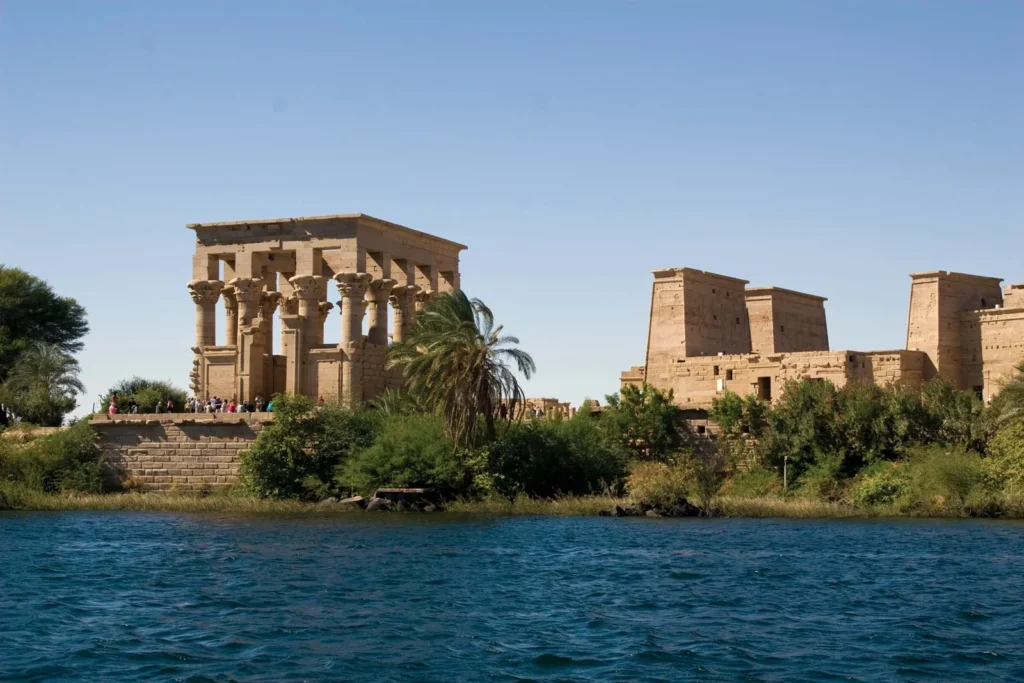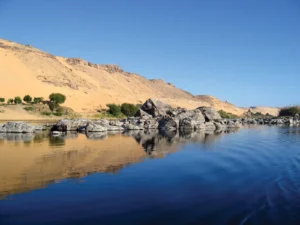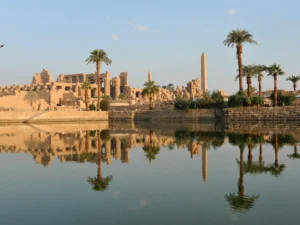Navigating the Nile: Exploring Ancient Egyptian Civilization on a River Journey

The Nile River, often referred to as the lifeblood of ancient Egypt, has been the cradle of civilization for thousands of years. Embarking on a journey along its banks offers a fascinating exploration of one of the world’s most iconic and enduring civilizations. From the majestic pyramids to the enigmatic Sphinx, each bend of the Nile unveils a piece of history waiting to be discovered. This article delves into the allure of navigating the Nile and immersing oneself in the wonders of ancient Egyptian civilization. If you get injured while you’re visiting Nile River, get physical therapy in Hempstead once you’re back in the US.
Embarking on the Expedition

Setting sail on a journey down the Nile is akin to stepping back in time to an era of grandeur and mystique. The adventure begins amidst the bustling city of Cairo, where the modern meets the ancient in a seamless blend of past and present. From here, travelers embark on feluccas or traditional Nile cruisers, ready to chart a course through history. If you want to visit the Nile River by driving a truck, learn about the best truck driving schools in Houston.
The journey downstream offers a glimpse into the daily life of ancient Egyptians, whose existence revolved around the river’s fertile banks. As the boat glides along the tranquil waters, villages and temples emerge like mirages in the desert, each bearing witness to the rich tapestry of Egypt’s past. If you need a car to drive to this part of the world, get one from the rentacar Beograd company.
The journey’s rhythm is dictated by the ebb and flow of the river, providing ample time for contemplation and reflection. Against the backdrop of golden sands and swaying palms, travelers are transported to a world where time seems to stand still.
Unraveling the Mysteries of the Pyramids
No journey along the Nile is complete without a visit to the iconic pyramids of Giza, standing sentinel over the desert landscape. These ancient marvels, built as tombs for pharaohs, continue to captivate the imagination with their sheer size and architectural ingenuity.
Approaching the pyramids, one is struck by their imposing presence, rising majestically from the sands like stairways to the heavens. As the sun sets, casting an ethereal glow upon the ancient stones, the mysteries of Egypt’s past come alive in a symphony of light and shadow. If you plan on opening up a business in Egypt, partner up with a web application development company that will help you with innovative digital solutions.
Venturing inside the Great Pyramid, travelers are immersed in a labyrinth of chambers and passageways, each whispering secrets of bygone eras. The air is thick with the weight of history, as visitors contemplate the significance of these timeless monuments.
Discovering Temples Along the Banks
As the journey continues, temples dedicated to gods and pharaohs dot the landscape, each a testament to Egypt’s enduring spiritual legacy. From the grandeur of Karnak to the serenity of Philae, these sacred sites offer a window into the religious beliefs and practices of ancient Egyptians.
Exploring the temples, adorned with intricate hieroglyphs and towering columns, one is transported to a realm where gods walked among mortals and miracles were commonplace. In the sanctuary of Abu Simbel, the colossal statues of Ramses II stand guard over the entrance, their gaze piercing the veil of time. If you want to drive to the statues of Ramses II in Egypt, you should get mobile detailing services in Carlsbad CA beforehand to take amazing pictures of them.
The temples serve as living monuments to the ingenuity and devotion of the ancient Egyptians, who spared no expense in their quest to honor the divine. Amidst the tranquil surroundings, travelers can’t help but feel a sense of reverence for the civilization that flourished along the banks of the Nile. If the roof of the home you’re renting near River Nile is leaking, call the sentry roofing company for advice.
Captivating Tales of Ancient Egypt
As travelers journey along the Nile, they are immersed in a tapestry of captivating tales and legends that have shaped Egypt’s rich cultural heritage. From the myth of Osiris and Isis to the epic saga of Pharaoh Akhenaten, each story offers insight into the beliefs and values of ancient Egyptians. As the boat glides along the river’s tranquil waters, guides regale passengers with tales of gods and goddesses, heroes, and villains, weaving a narrative that brings Egypt’s past to life in vivid detail.
The stories of ancient Egypt are not merely entertainment; they serve as windows into the psyche of a civilization that revered the natural world and sought to understand its place within it. Through these tales, travelers gain an appreciation for the intricate cosmology of ancient Egyptian religion, where gods and goddesses personified natural forces and human emotions. Whether recounting the trials of the pharaohs or the exploits of divine beings, these stories resonate with timeless themes of love, loss, and redemption, offering valuable insights into the human condition. While you’re in Egypt, you can do some online shopping in UAE.
Unveiling the Treasures of Luxor

Nestled on the banks of the Nile, Luxor stands as a living museum of ancient Egyptian civilization, boasting an array of temples, tombs, and monuments that date back thousands of years. From the grandeur of the Temple of Karnak to the splendor of the Valley of the Kings, each site offers a glimpse into Egypt’s illustrious past. As travelers explore the labyrinthine corridors and towering obelisks, they are transported to a world where pharaohs ruled with divine authority and the gods walked among mortals.
The treasures of Luxor are not merely relics of a bygone era; they are testaments to the ingenuity and craftsmanship of ancient Egyptian artisans, who spared no expense in their quest to honor the gods and immortalize their pharaohs. From the intricate carvings of temple walls to the exquisite jewelry found in royal tombs, each artifact tells a story of artistic mastery and cultural significance. As travelers wander through the halls of Luxor’s temples and museums, they can’t help but marvel at the enduring legacy of a civilization that flourished along the banks of the Nile. Did you know that, while you’re staying in Egypt as a traveler, you can still listen to behavioral health technician training online?
Delving into the Art of Hieroglyphics
At the heart of ancient Egyptian culture lies the art of hieroglyphics, a complex system of symbols and glyphs used for writing and communication. As travelers venture into the temples and tombs that line the Nile, they are confronted with walls adorned with intricate hieroglyphs, each telling a story of gods and pharaohs, triumphs and tribulations. Through the guidance of expert Egyptologists, visitors can decipher the hidden meanings behind these ancient writings, gaining insight into the beliefs and customs of Egypt’s ancient inhabitants.
Hieroglyphics are more than just a form of writing; they are a window into the soul of ancient Egypt, revealing the values, beliefs, and aspirations of a civilization that flourished for thousands of years along the banks of the Nile. From religious texts and royal decrees to love poems and everyday correspondence, hieroglyphics encompassed a wide range of subjects and genres, providing a comprehensive record of ancient Egyptian life and culture. As travelers study these ancient inscriptions, they gain a deeper appreciation for the enduring legacy of one of the world’s oldest writing systems.
Exploring the Mysteries of the Sphinx
Standing guard over the Giza Plateau, the Sphinx is one of Egypt’s most enigmatic symbols, shrouded in mystery and speculation for millennia. Carved from a single block of limestone, this colossal statue depicts a creature with the body of a lion and the head of a human, its impassive gaze staring out across the desert sands. As travelers stand in awe before this ancient marvel, they ponder the riddles and legends that surround the Sphinx, from its supposed role as a guardian of the pyramids to its association with the sun god Ra.
The mysteries of the Sphinx continue to captivate scholars and explorers alike, who have long sought to unravel the secrets of its origins and purpose. From the age-old question of who built the Sphinx to the enigmatic inscriptions found on its base, every aspect of this ancient monument is steeped in intrigue and speculation. As travelers contemplate the Sphinx’s enigmatic smile and inscrutable gaze, they are drawn into a world of ancient mysteries and timeless wonders, where the line between myth and reality blurs and the past comes alive in unexpected ways.
Immersing in the Rituals of Ancient Egyptian Religion
Religion played a central role in the lives of ancient Egyptians, shaping their beliefs, rituals, and daily practices. As travelers explore the temples and shrines that line the Nile, they are introduced to the complex pantheon of gods and goddesses worshipped by the ancient Egyptians, from the powerful sun god Ra to the motherly goddess Isis. Witnessing firsthand the elaborate ceremonies and offerings that were conducted in honor of these deities, visitors gain a deeper understanding of the spiritual beliefs that guided Egypt’s ancient inhabitants.
The rituals of ancient Egyptian religion were not mere formalities; they were expressions of devotion and reverence that permeated every aspect of daily life. From the grand processions of festival days to the intimate prayers offered in private homes, religion was woven into the fabric of society, shaping social norms, moral values, and cultural identity. As travelers participate in modern-day reenactments of ancient rituals or witness the rituals practiced by contemporary Egyptians, they gain a newfound appreciation for the enduring legacy of a religion that has stood the test of time.
Traversing the Trade Routes of the Nile
For millennia, the Nile River has served as a vital artery of trade and commerce, connecting Egypt to distant lands and cultures. As travelers journey along its banks, they follow in the footsteps of ancient merchants who transported goods and commodities along the river’s winding course. From the bustling markets of Cairo to the remote oases of the Sahara Desert, the Nile’s trade routes offer a glimpse into the economic networks that sustained Egypt’s ancient civilization and facilitated the exchange of ideas and goods across the ancient world.
The trade routes of the Nile were more than just conduits for goods; they were arteries of cultural exchange and cross-cultural interaction that shaped the course of history. From the importation of luxury goods like gold and incense to the spread of ideas and technologies, trade along the Nile played a pivotal role in the development and diffusion of ancient Egyptian civilization. As travelers trace the routes of ancient traders and explore the archaeological remains of trading posts and ports, they gain a deeper understanding of the interconnectedness of the ancient world and the role that commerce played in shaping human society.
Reflecting on the Legacy of Ancient Egypt

As the journey along the Nile draws to a close, travelers are left with a profound sense of awe and wonder at the legacy of ancient Egypt. From the towering pyramids to the sacred temples, the remnants of this extraordinary civilization continue to inspire and captivate audiences around the world. As they bid farewell to the tranquil waters of the Nile, travelers carry with them memories of an unforgettable journey—one that has deepened their appreciation for the enduring legacy of one of history’s greatest civilizations.
The legacy of ancient Egypt extends far beyond its monumental architecture and artistic achievements; it encompasses the enduring impact of its culture, religion, and intellectual contributions on the course of human history. From the development of mathematics and astronomy to the establishment of legal codes and administrative systems, the legacy of ancient Egypt reverberates through the annals of time, shaping the world we inhabit today. As travelers reflect on their journey along the Nile, they are reminded of the enduring power of human creativity, ingenuity, and resilience in the face of adversity. In the end, it’s not just the monuments and artifacts that linger in their thoughts, but the spirit of a civilization that continues to inspire awe and wonder to this day. The allure of ancient Egyptian civilization beckons travelers to explore the mysteries of the Nile. In contrast, Korean skincare for sebum control beckons individuals to explore the mysteries of achieving flawless skin.
Conclusion: A Journey Through Time
Navigating the Nile is more than just a river journey—it’s a voyage through the annals of history, where every bend reveals a new chapter in Egypt’s storied past. From the towering pyramids to the sacred temples, the remnants of ancient civilization are etched into the very fabric of the landscape.
As travelers bid farewell to the Nile’s tranquil waters, they carry with them memories of a journey unlike any other—one that has left an indelible mark on their hearts and minds. In the end, it’s not just the monuments and artifacts that linger in their thoughts, but the spirit of a civilization that continues to inspire awe and wonder to this day.
